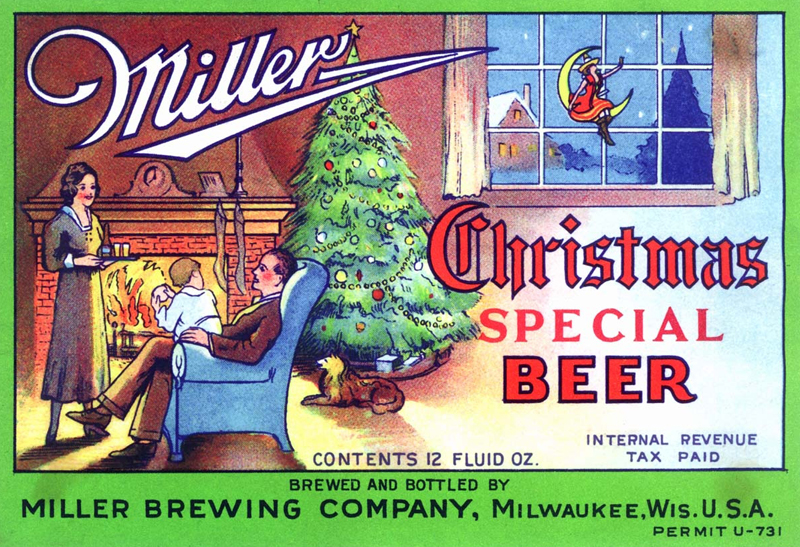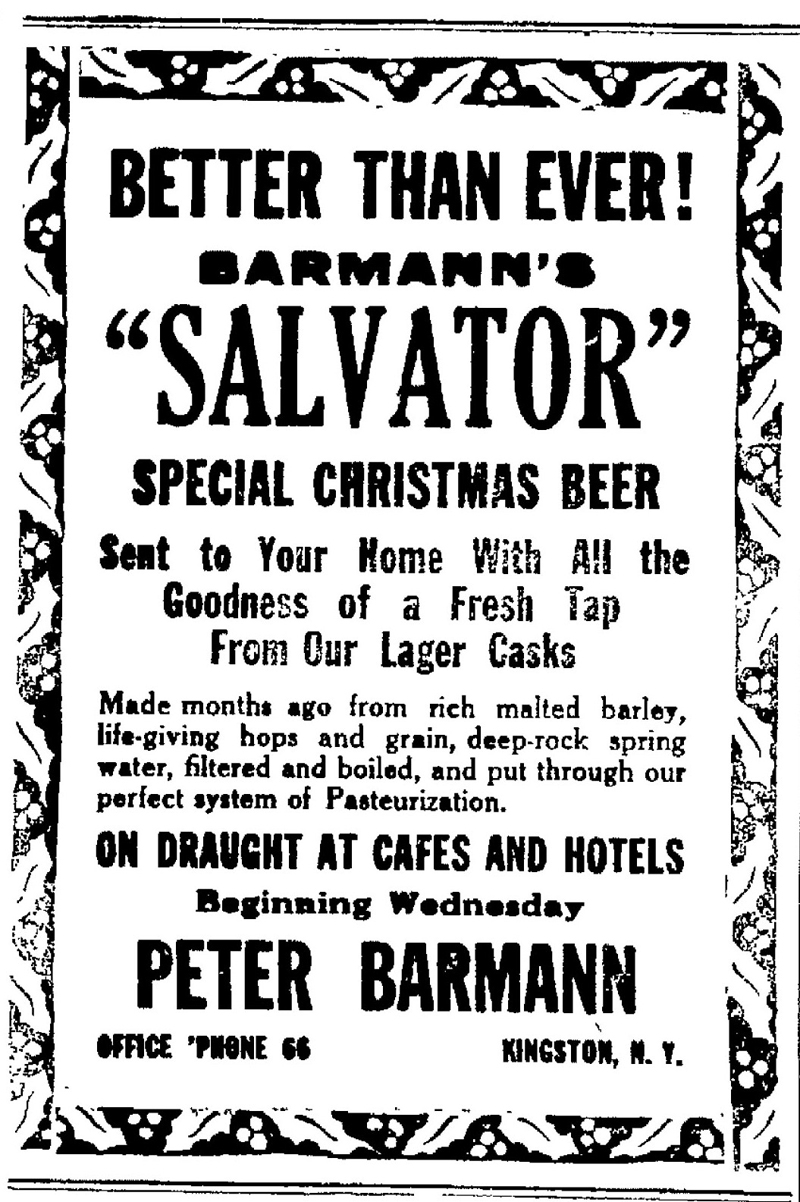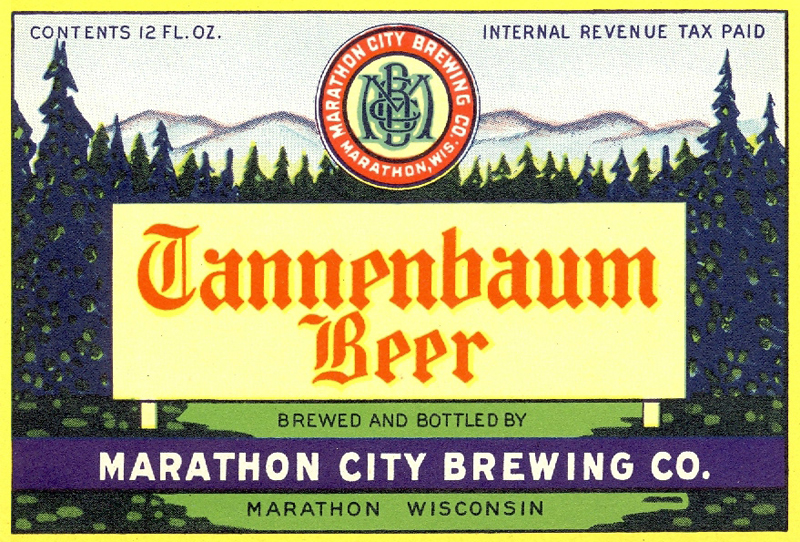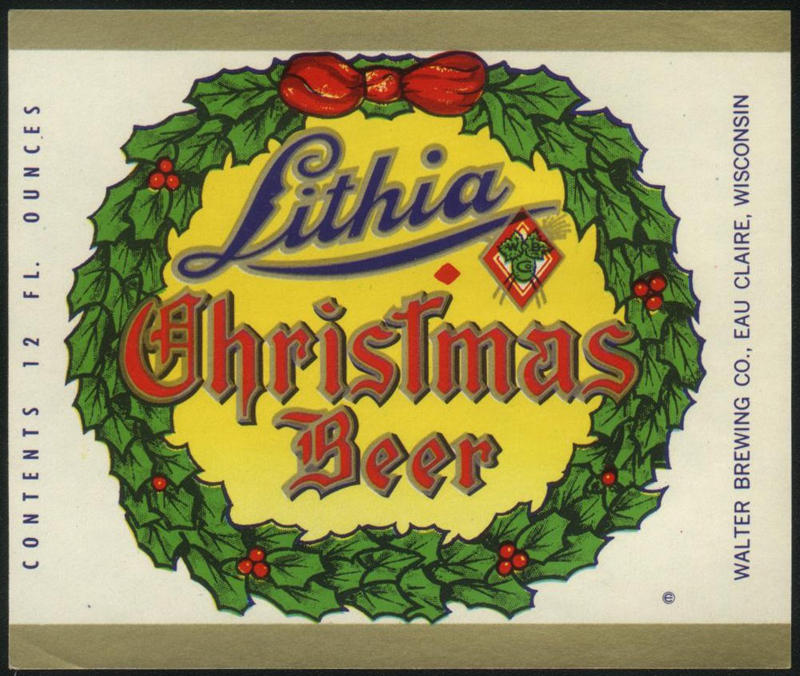A Brief History of American-Made Christmas Beer
In November 1975, the Anchor Brewing Co. released what it called, simply, “Our Special Ale.” The beer quickly became known by two other things on the label: a generic Christmas tree smack-dab in the center and the words, “Merry Christmas and a Happy New Year.”
Anchor’s seasonal in 1975, the first seasonal from an American brewery since Prohibition, marked the advent of the modern Christmas beer in the United States, those thicker, richer, seemingly obligatory concoctions that flood retailer shelves ‘round about the week before Thanksgiving. Anchor originally based that first one on an earlier 1975 release called Liberty Ale, an immensely influential, hoppier beer that became a standalone brand for the second time in 1983.
After 1975, Anchor would regularly tweak both its Christmas ale recipe and label. The 2014 release, the brewery’s 40th straight Christmas ale, features a Sequoiadendron giganteum tree (a.k.a. giant redwood) and tastes, as most Anchor Christmas Ales have since the late 1980s, of spices such as nutmeg and cloves. Though those are only guesses: the recipes remain closely guarded secrets. The earliest Anchor Christmas Ales were decidedly hoppier, and less malty.
As important as it has been, Anchor’s Christmas beer was not the first American-made one. Which was? Hard to say.
That distinction might lay with the old Barmann Brewery in Kingston, NY, about 90 miles up the Hudson River from New York City. The brewery, started by a Bavarian immigrant with the perfect name of Peter Barmann, released what it called “Salvator” around 1915. Packaging for the lager described it as a “Special Christmas Beer,” one “made months ago from rich malted barley, life-giving hops and grain, deep-rock spring water, filtered and boiled, and put through our perfect system of Pasteurization.”
Others followed, especially after repeal of Prohibition in 1933. The Miller Brewing Co. out of Milwaukee had its “Christmas Special Beer” in the mid-1930s, complete with a Norman Rockwell-esque label of a family around a roaring fire, Christmas tree lighted and full pilsner glasses at the ready. The old Ballantine, too, had Christmas beer, beginning perhaps as early as the mid-1940s; according to the label, however, it was “not for sale,” but rather to provide “Christmas Greetings from” top executives to special supporters and associates of the brewery.
Government grinches soon stole much of this Yuletide thunder.
“A few years after Prohibition, most states banned references to Christmas or Santa Claus, so you saw a lot of ‘Holiday’ ales that I’d guess were called Christmas beer before Prohibition,” said Don Russell in an email. Russell is the author of Christmas Beer: The Cheeriest, Tastiest and Most Unusual Holiday Brews and a longtime beer critic under the nom de plume Joe Sixpack (hat tip as well to the critic Jay Brooks for information for this column).
Russell cited beers such as Tannenbaum Beer from Wisconsin’s Marathon City Brewing and Xmas Brew from Becker Brewing and Malting Co. out of Wyoming as examples of this end-around. Other breweries continued to be more direct. The West Bend Brewing Co., also out of Wisconsin, produced its Lithia Christmas Beer into the 1950s; the beer seems to have survived into the 1970s, in fact, after West Bend joined the Walter Brewing Co. in Eau Claire.
None, though, would prove as definitely influential as that first Our Special Ale from Anchor 40 years ago this season.
RELATED: What makes a holiday beer?
Read more Acitelli on History posts.
Tom Acitelli is the author of The Audacity of Hops: The History of America’s Craft Beer Revolution. Reach him on Twitter @tomacitelli.





Thank you for the info I always appreciate good information.
Merry Christmas & Happy New Year.
P.S. Our C. B. is called “Christmas Girl which is a Belgium Blond.
Don’t forget about Potosi’s Holiday brand, from Wisconsin’s 3rd Oldest Brewing Company…Potosi Brewing Company. Holiday was brewed for countless years and became a year-round beer it was so popular. The Brewery was originally founded in 1852, made it through prohibition, shut down in 1972 and then reopened again in 2008. This year Potosi released it’s Holiday Bock with a throwback label. http://www.potosibrewery.com
Great info and history lession. Thanks.
Jack McAuliffe’s New Albion also produced a Yuletide Ale. Cheers~ Renee DeLuca
http://www.newalbionbrewing.com
Don’t know if you still follow this page, but I came across your article and subsequently came across an ad while looking at old newspapers for Dubuque beer ads and came across an ad for the Dubuque Malting Company Extra Pale Xmas Brew from 1895, a decade earlier than the Barmann Brewery’s Christmas brew. see https://news.google.com/newspapers?nid=_OG5zn83XeQC&dat=18951224&printsec=frontpage&hl=en
I just came across this article, which raises some interesting questions. There were a number of special Christmas beers prior to 1915 in Wisconsin alone, including from Walter of Eau Claire, Rahr of Manitowoc, and the Neillsville brewery, all of which were bottled. It was rare for the large Milwaukee breweries to offer a special bottled product at Christmas, though several appear to have had a draught Christmas beer.
After Prohibition, a majority of Wisconsin’s smaller breweries offered a Christmas or Holiday beer, a few under the name of Christmas Beer. While some states may have outlawed the use of the term Christmas on beer labels, it was not the case in Wisconsin. The use of the alternate term Holiday was more likely adopted to expand the marketing season for the beer, rather than limiting it to the period immediately around Christmas. Label printers made a variety of stock holiday beer labels which could be overprinted with the brewer’s name, and they may have chosen this name to accommodate breweries in all states.
Salvator was quite common as a style in Upper Midwest breweries in the period prior to 1920, and while often a winter offering, was not specifically a Christmas beer for many brewers.
Potosi’s Holiday beer and Marathon’s Tannenbaum were not winter seasonals, they were the year-round flagships of those breweries.
With the explosion of brewing here in Michigan and Grand Rapids being crowned Beer City USA a few times, Christmas Ales are a nice treat. I continually look for new entrants, but still have not found one as enjoyable as the Christmas Ale from Great Lakes Brewing Co. If you get a chance, don’t let it pass. https://www.greatlakesbrewing.com/christmas-ale